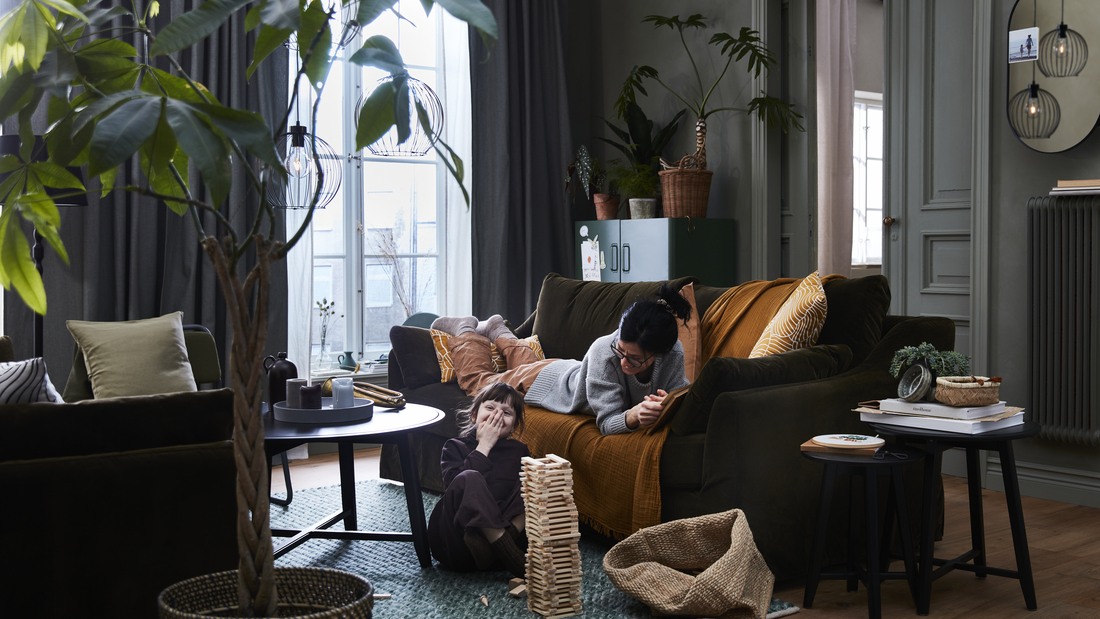Comfort in Sleep with Biophilic Design: Bringing Nature into Your Space



In this modern era, good sleep quality has become one of the keys to health and well-being. One way to achieve this is through biophilic design, which integrates elements of nature into our living spaces.
This concept focuses on creating a balanced environment, blending natural lighting, plants, and eco-friendly materials to create a calming and refreshing atmosphere.
By introducing natural elements, you not only enhance the aesthetics of the space but also create an atmosphere that supports quality sleep.
Discover how biophilic design can provide better sleep comfort and transform your space into an oasis of tranquility.
Biophilic design refers to the concept that integrates natural elements into artificial spaces, creating a harmonious and calming atmosphere.
The aim of this concept is to connect humans with nature, which in turn can enhance individual quality of life and health.
By aligning the environment with basic human needs, biophilic design can offer a more holistic experience in creating comfortable and productive spaces.
Biophilic design is an approach that incorporates elements of nature into human-made environments. In this way, the created spaces do not only function as living or working places, but also contribute to the mental, emotional, and physical well-being of their occupants.
This design seeks to create an atmosphere that supports relaxation and productivity while reducing stress.
Through the use of natural lighting, good ventilation, and the placement of plants, biophilic design can provide a healthier and more balanced living experience.
The concept of biophilic design has strong roots in the biophilia theory proposed by E.O. Wilson. This theory states that humans have an innate tendency to connect with nature and all forms of life. Over time, this thinking has evolved and been applied in various aspects of design, including architecture and interior design.
Understanding the importance of the relationship between humans and nature, biophilic design has become a fundamental necessity for creating environments that support overall human well-being.
Several key elements in biophilic design include natural lighting, good ventilation, the use of indoor plants, and the selection of natural materials.
By utilizing sunlight, spaces can feel more alive and refreshing. Good ventilation improves air circulation, while plants help improve air quality and add aesthetic beauty.
The use of natural materials, such as wood and stone, provides a warm feel that makes spaces feel more welcoming.
All these elements aim to maximize health and productivity indoors, creating a balanced and pleasant environment.
Read also: A relaxing and lush outdoor space
Biophilic design plays a significant role in enhancing daily life quality. By integrating natural elements into the environment, we can create a more harmonious atmosphere that supports both physical and mental well-being.
This concept not only provides comfort but also boosts productivity and overall health. Understanding the importance of biophilic design will help us optimize the spaces around us.
Biophilic design has a positive impact on mental health by reducing stress and anxiety often experienced in daily life.
By introducing natural elements, such as plants and natural lighting, individuals feel calmer and more connected to their surroundings.
The presence of these elements can help create an atmosphere that supports mood improvement and emotional well-being.
Research shows that environments that integrate natural elements can help individuals feel happier and more satisfied, promoting better mental health.
Integrating natural elements into space design can provide significant benefits for physical health. One of the main advantages is improved air quality, which is essential for respiratory health.
Additionally, a more relaxed and natural atmosphere helps reduce the risk of stress-related illnesses and fatigue.
When environments are designed with natural elements in mind, individuals can experience positive effects on their bodies, contributing to better health and improved quality of life.
This shows that biophilic design is not only aesthetic but also functional in supporting physical health.
Biophilic design also significantly influences work productivity. Environments that combine natural elements create an atmosphere that supports focus and creativity.
When individuals are in well-designed spaces, they tend to feel more motivated and energetic.
The presence of natural lighting and plants can help improve concentration and minimize distractions, making performance at home or in the office more optimal.
Thus, biophilic design plays an essential role in creating efficient and enjoyable workspaces that support individual success.
Read also: A cosy, natural bedroom
Begin your biophilic design journey by identifying natural elements, such as plants and natural light, that you want to integrate.
Apply the biophilic design implementation guide in each room to create a fresh, comfortable, and calming atmosphere.
Explore the Build Your Good Sleep page #HanyadiIKEA for inspiration on bedroom furniture and layouts that align with the biophilic concept.
IKEA offers affordable home solutions with free shipping to the nearest pick-up point.
Visit IKEA’s customer service for interior design assistance now and discover more exciting offers!
Please enter the verification code sent to your WhatsApp
Did not receive OTP?
Resend code in seconds